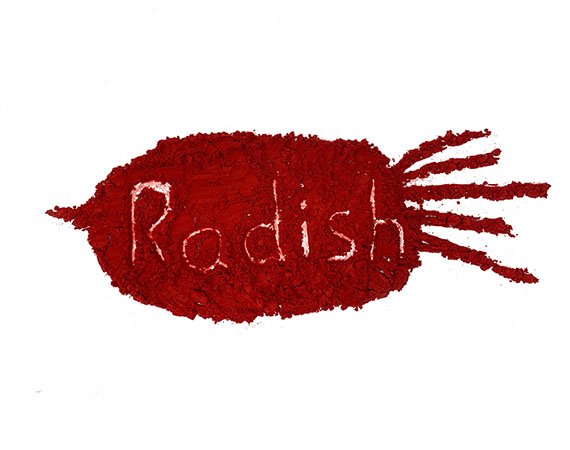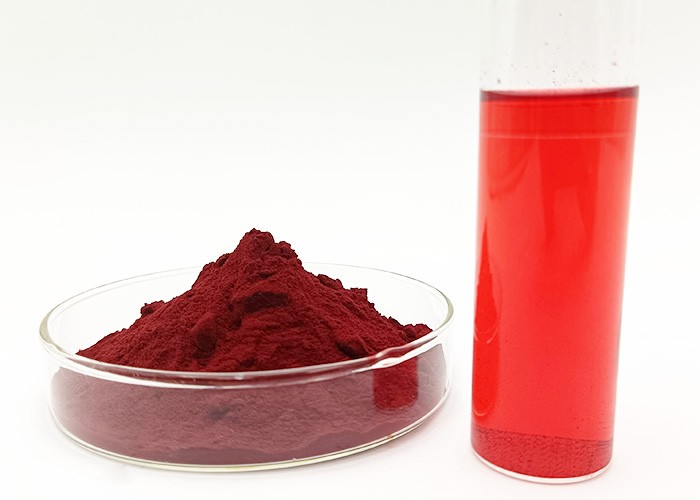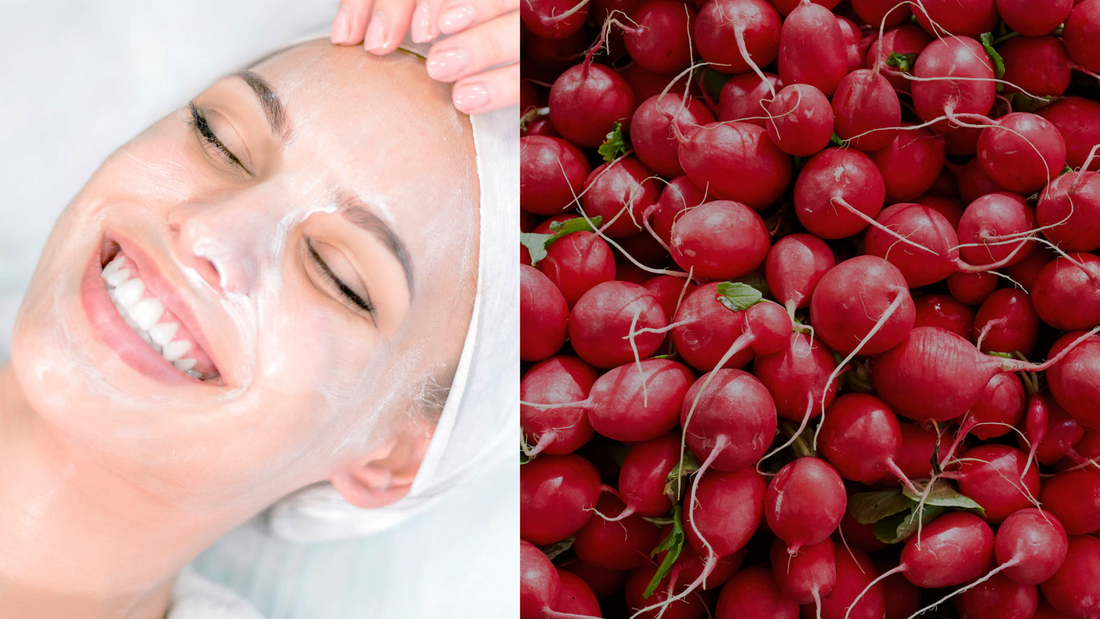Are Red Radishes Good for You?
Red Radishes are root vegetables packed with nutrients. They are used in Ayurveda and Traditional Chinese Medicine to treat many conditions such as fever, sore throat, bile disorders, and inflammation. From vitamins and minerals to antioxidants and fiber, radishes provide numerous health benefits. This article discusses the nutritional content of radishes and how they promote different aspects of well-being.

What is Red Radish Powder?
Radish Red (Red Radish Color), is a pure natural and water-soluble food coloring pigment, is extracted from Raphanus sativus, a characteristic colorant extracted from the vibrant red skin of radishes, known for its remarkable tint and flexibility in a variety of applications. Due to its rich creation of anthocyanins, the shades responsible for its red color, Radish Color fills in as a sought-after fix in the food, refreshment, restorative, and pharmaceutical industries.

Nutritional Profile of Radishes
Radishes are low in calories but rich in essential nutrients. One serving of raw radishes (100 grams) has:
Calories: 16 kcal
Carbohydrates: 3.4 g
Fiber: 1.6 g
Protein: 0.7 g
Fat: 0.1 g
Vitamin C: 14% of the Daily Value (DV)
Folate: 6% of the DV
Potassium: 5% of the DV
Calcium: 2% of the DV
Magnesium: 2% of the DV
Red globes, raw, 1/2 cup sliced
| Calories | 12 calories |
| Protein | 0.35 g |
| Carbohydrates | 2.0 g |
| Dietary Fiber | 1 g |
| Potassium | 134.56 mg |
| Folate | 15.66 mcg |
This nutritional makeup makes radishes an excellent inclusion in a well-balanced diet.

Red Radishes Health Benefits
1. Maintains Digestive Health
Radishes have high fiber content, which aids digestion by making the bowels regular and discouraging constipation. The radish fiber is also good for gut health, as it will feed beneficial gut bacteria in the intestines.
2. Enhances Immune Function
Vitamin C also plays a very important role in the functioning of the immune system. Radishes contain sufficient vitamin C, which is an immunity booster, strengthening the body against infections and disease. Vitamin C is also an antioxidant that keeps the skin healthy as well as facilitates healing of wounds.
3. Detoxifies the Body
Radishes have substances that help detoxify the body by promoting the functioning of the liver. Their natural diuretic nature also helps in flushing out toxins through the urine, supporting kidney health.
4. Promotes Heart Health
The amount of potassium found in radishes maintains blood pressure by balancing sodium in the body. Radishes are also rich in anthocyanins, which have been associated with heart disease risk reduction because of their antioxidant nature.
5. Can Help Balance Blood Sugar
Radishes are low in glycemic index and include substances that could regulate blood glucose levels. Experiments indicate that radish extracts enhance insulin response, which is a healthy food option for diabetes patients.
6. Supports Skin Health
The antioxidants present in radishes, such as vitamin C and anthocyanins, protect the skin from oxidative stress, which can cause premature aging. The water content in radishes is also high, keeping the skin fresh and hydrated.
7. May Have Anti-Cancer Properties
Radishes are rich in glucosinolates, sulfur compounds that can potentially shield cells from cancer-causing damage. These compounds aid the body's natural cleansing process and have been researched for their ability to prevent cancer.
8. Aids Weight Loss
Radishes are low in calories but rich in fiber, making them an excellent inclusion in weight-reduction diets. Their crunchy texture and peppery taste make them a filling snack without contributing additional calories.

Red Radish Powder: A Convenient Superfood
Red Radish Powder is a concentrated mixture of red radishes that retains their nutritional values and provides convenience and versatility. It is prepared through the dehydrating and finely powdering of red radishes, retaining their vitamins, minerals, and antioxidants.
Advantages of Red Radish Powder:
1. High in Antioxidants: Maintains anthocyanins and vitamin C, which protects against oxidative stress and inflammation.
2. Digestive Support: Has fiber, which maintains the health of the gut and supports digestion.
3. Boosts Immunity: Provides essential nutrients that enhance immune function.
4. Easy to Use: Can be added to smoothies, soups, sauces, or sprinkled over salads for a nutritional boost.
5. Great for Detoxification: Helps support liver function and natural detox processes.
Red radish powder is an excellent option for individuals looking to incorporate the health benefits of radishes into their diet without having to consume fresh radishes daily.

Red Radish Skincare Benefits
1. Reduces inflammation: This mighty ingredient can help to reduce inflammation of the skin by decreasing swelling and redness. The anti-inflammatory properties of radish root are due to its high concentration of antioxidants. These antioxidants help to protect the skin from damage caused by free radicals, which can lead to inflammation.
2. Benefit acne prone skin: Radish root can also help to fight acne breakouts. The antibacterial and antifungal properties of radish root help to kill the bacteria that cause acne and prevent new breakouts from forming. In addition, radish root's anti-inflammatory properties can help to reduce the redness and swelling associated with acne breakouts. Together, these properties could also benefit skin or scalp conditions.
3. Keeps skin hydrated: This ingredient is also a great source of hyaluronic acid, which helps to keep your skin's surface hydrated and looking plump. Hyaluronic acid is able to hold up to 1000 times its weight in water, so it's a great way to keep your skin hydrated. It can also help with aging by reducing the appearance of wrinkles and fine lines.
4. Natural preservative product: In the form of radish root ferment filtrate, radish root can act as a natural preservation product for other products in your skincare routine. It's thus a natural alternative to other preservatives that increase shelf life. When used with other ingredients, radish root helps to create a barrier that prevents oxidation and gently inhibiting growth of bacteria.

How to Include Radishes in Your Diet
There are numerous ways to include radishes in your everyday diet:
1. Raw in Salads: Radishes can be sliced and incorporated into fresh salads for a peppery texture.
2. Pickled: Pickled radishes provide a tangy flavor to sandwiches and rice dishes.
3. Roasted: Roasting radishes tenderizes their texture and sweetens their pungent flavor.
4. Sautéed: Sauté radishes lightly with garlic and olive oil as a speedy side dish.
5. Radish Greens: The greens of radishes are also palatable and can be added to salads or blended in smoothies.
6. Red Radish Powder: Blend into smoothies, soups, sauces, or salad dressings for a quick nutritional boost.

Conclusion
Radishes are a nutrition-rich vegetable that offer a myriad of health advantages. From promoting digestion and maintaining cardiovascular health to providing anti-inflammatory and immune system-boosting abilities, they are an invaluable ingredient in any diet. Red radish powder provides an easy means to access these benefits in concentrated form. Adding radishes to your dishes can increase nutrition along with a cooling crunch to your favorite foods. Incorporate red radish powder and radishes into your diet today and experience their health-promoting benefits!
References
USDA FoodData Central. "Radishes, raw." https://fdc.nal.usda.gov/
Kim, M. J., et al. (2017). "Health benefits of radishes and radish sprouts: A review." Journal of Functional Foods, 34, 1-10.
Gill, C. I., et al. (2004). "Glucosinolates, isothiocyanates, and human health: The role of radishes in cancer prevention." Nutrition and Cancer, 50(3), 206-217.
Das, S., et al. (2014). "Antioxidant and antimicrobial properties of radish (Raphanus sativus L.) root and its relevance to human health." Pharmacognosy Review, 8(15), 92-95.
Sharma, K., et al. (2012). "Potential of radish (Raphanus sativus) in the management of diabetes and associated complications." Journal of Clinical Biochemistry and Nutrition, 50(3), 174-179.
Send Inquiry
Related Industry Knowledge
- what is blue spirulina powder?
- Unlocking the Benefits of Glutathione Powder for Health and Wellness
- Is NMN Powder the Future of Anti-Aging Supplements?
- Hericium Erinaceus
- Carbon Black Powder – The Natural Food Coloring
- Seamoss Gummies: Benefits for All Ages
- how to use sunflower lecithin powder
- Does oat beta-glucan brighten skin?
- Benefits of baobab powder for skin
- Lycopene as an antioxidant


